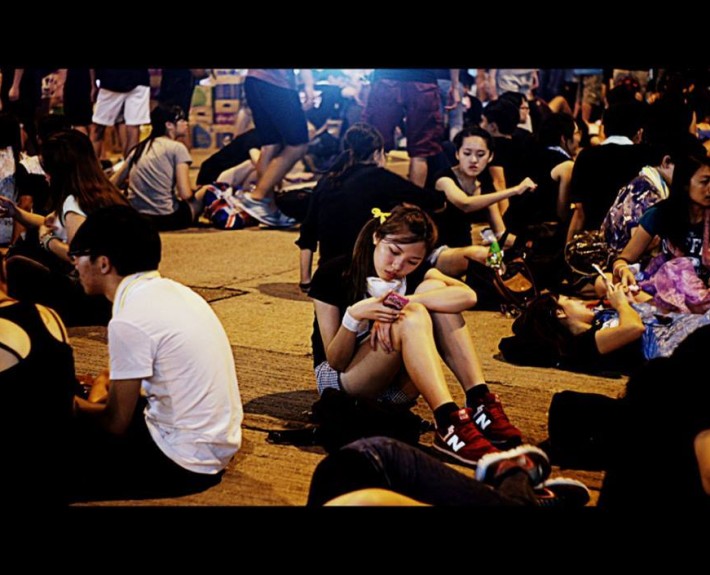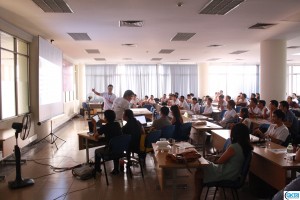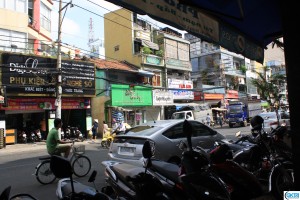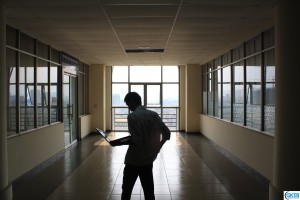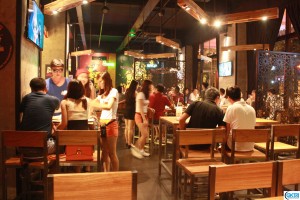Ongoing Events in Hong Kong
The images coming out of Hong Kong over the past week have been increasingly troubling as tensions rise between protesters and authorities—and the political, economic, and social impacts remain unclear as the Occupy Central movement builds. Ultimately, it boils down to competing narratives: one where the protestors are “rabble rousers” who are perverting the spirit of the Basic Law in Hong Kong. Of course, the protesters and their supporters see the situation as fighting for their ability to freely choose an elected leader without interference from Beijing—at least on the face of the movement—but there is, no doubt, underlying economic pressures that have influenced the course of events to lead to a potentially transformative event like Occupy Central.
At the forefront of this movement to retain autonomy from China (and to express their grievances) is the youth of Hong Kong. Each day, more people are joining the ranks of fresh faces on the ground, thereby disrupting daily school, work, and livelihoods. On one hand, stability is important—especially in terms of Foreign Direct Investment (FDI)—and let’s face it: Hong Kong relies on financial operations and markets flowing smoothly in order to prosper. At the same time, a segment of people in Hong Kong wish to express themselves—but at what cost?
On The Ground in Hong Kong
Below is a first-hand account of what things are like in and around the tense atmosphere. Please note that GKTA Group Limited does not endorse, condone, or support the following views unless otherwise noted.
“This week is usually really important for Hong Kong shopkeepers, because people from continental China are on holidays for national day and go to Hong Kong for shopping–those sales represent an important part of the turnover in the season.
Actually, [Friday], I was in Causeway Bay, which is a shopping quarter – the place where the riots took place – there were only tourists from continental China inside shops. But students and demonstrators from [the] Occupy [Central movement] were still blocking the streets.
I was in a shop – which was unexpectedly calm for a sales period – and we got blocked inside because of the arrival of those men wearing masks and the beginning of riots between “pro” and “anti[.]” Here, it is said that these “anti”-guys come from the Triads funded by the government.
In two minutes, the ambiance changed dramatically from a friendly atmosphere to a strained and electric one. But tourists didn’t seem to be frightened, and two blocks further, families were quietly going shopping.
However, some people seem really exhausted here, especially shopkeepers and people supporting Beijing, and even in my subway station far from the center of the city, people are fighting. I cannot speak a word of Cantonese so it is quite hard for me to understand discussions.
Besides, we need to take into account inequalities in Hong Kong: 50.000 people are literally living in cages and 50.000 people are living in subdivided flats with the same indecent comfort.
And this “great” movement for democracy comes from students from rich and well-off classes but is not followed by the part of population with tough living conditions whose first priority is not democracy.
Concerning the impact on the economy, usually, people go out of work and then join demonstrations and sittings. However, the whole central quarter is blocked and lot of people work at home. The major part of banks and companies are paralyzed because of barricades and closed subway stations in the business district, but for the moment, it is just impacting shopkeepers.
Plus, as everything is free during demonstrations (drinks, food, umbrellas, masks), shops around don’t really take advantage of it. I don’t know who pay[s] for all that stuff; [the] gossip [is] that it is funded by billionaires supporting the Occupy movement, but these are just rumors.”
The Global and Local Response
Nationalism for many countries in this region involves simply showing that one’s side is more vocal, animated, and devoted to its cause—which can result in ugly protests and political fervor. The response to the Hong Kong protests from the world (largely) has been to support the growing student and citizen movement in Hong Kong. Across Facebook, users in Vietnam and other countries are sharing links of the media coverage of the events as they unfold. Perhaps the Vietnamese are taking a deeper interest in China (as opposed to other Southeast Asian nations) because of the recent events in the South China Sea; the Vietnamese and Chinese histories have been intertwined for approximately 2,000 years.
Every nation acts in its own self-interest; the Chinese have shown that they are long-term and strategic thinkers who are adept at influencing external factors to achieve their aims. There are two clear ways the situation can play out: either the protestors become tired and go home, or Beijing gives in to the protestor’s demands. If Beijing gives in then it would set a precedent—a bad one from the government’s perspective, and a good one for supporters of Occupy Central.
If we look at the recent controversy over HD-981, the $1 billion oil rig owned and operated by China National Offshore Oil Corporation (CNOOC), the rig was moved out of the way when an incoming typhoon threatened the rig—not because Beijing had realized it had caused a major disturbance with its southern neighbor. Beijing was most likely testing uncharted territory by moving the rig into the Exclusive Economic Zone (EEZ), thereby surprising Hanoi. And it was Vietnam, not China that felt the economic sting due to riots and protests that damaged hundreds of factories back in May.
From an outsider’s perspective, it looks like China is the common denominator for disputes in the region, whether it’s in the South China Sea, or Hong Kong, or in the East China Sea. However, from the Chinese perspective, they believe they had every right to move its HD-981 oil rig within the nine-dash line—and of course, the Chinese position on Hong Kong is clear after reading the recently published white paper and considering the latest statement via the People’s Daily newspaper. It’s a tough situation all around for those involved as they strive to realize their aims and guide the episode’s outcome in their favor.
What about future issues in the region—how might they look like? There is a distinct possibility that the next time China and another country or Special Administrative Region (SAR) differ on principles, it will most likely be the dissenting party that pays the price—not China. However this situation in Hong Kong pans out, the bottom line is that some future investments may flow into Shanghai and Singapore (since they look more stable than Hong Kong at this point) as a result of this episode of social unrest. Beijing has a distinct advantage going forward: time–in the sense that as events continue to develop, the Occupy Central protesters and their opinions may become more fragmented as Beijing remains steadfast in its stance.
Thanks to Lina Skoglund for sharing her views and photos, and to Louis Boulay for contributing to this post.

